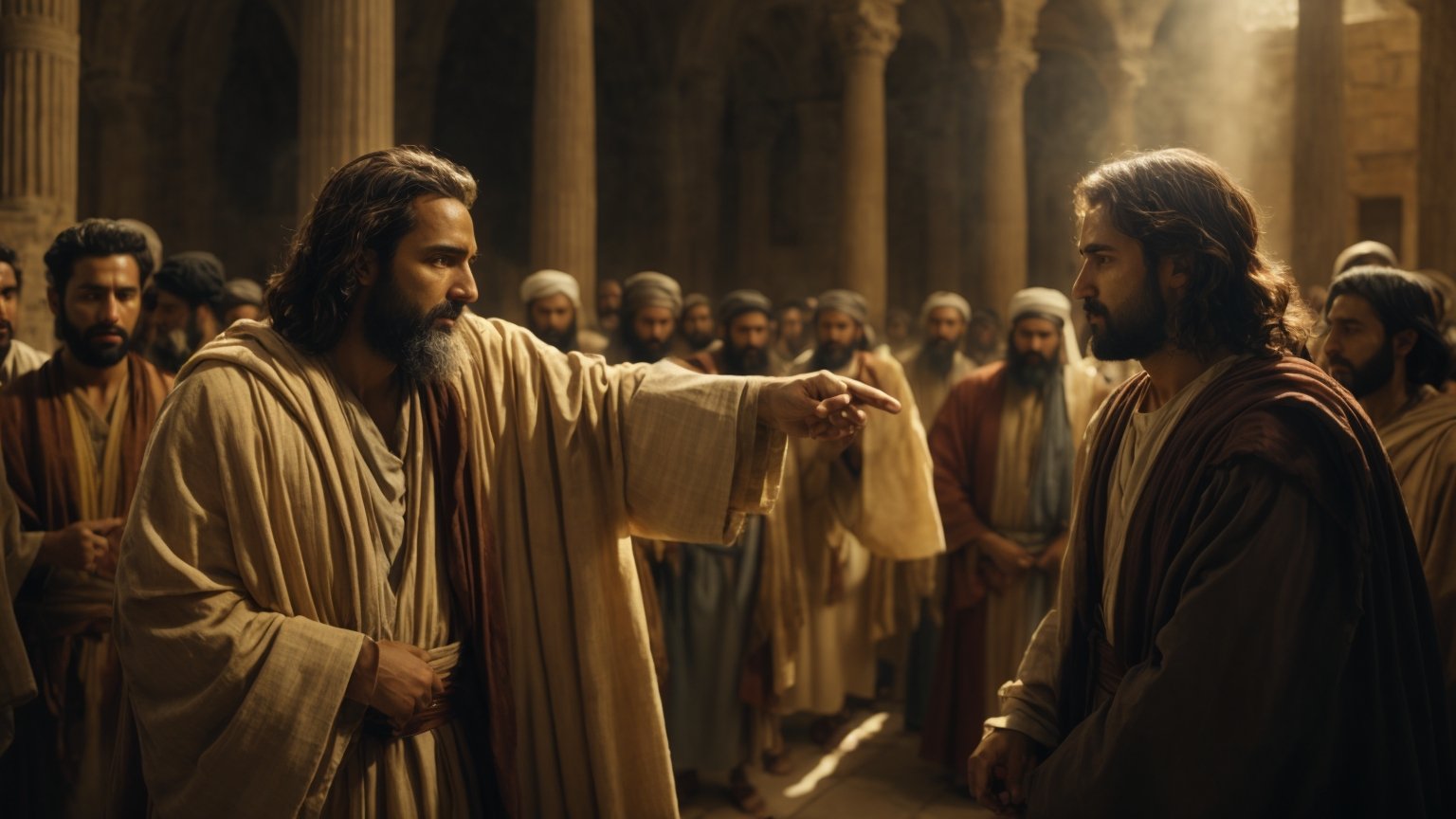The Apostle Paul’s Encounter: From Persecutor to Follower of Christ
Introduction:

The transformation of the Apostle Paul stands as one of the most remarkable narratives in the early Christian movement. Formerly known as Saul of Tarsus, Paul was a zealous persecutor of the early followers of Jesus. However, his life took a dramatic turn on the road to Damascus, where he encountered the risen Christ. This article explores the profound conversion of the Apostle Paul, delving into the background of his persecution and the transformative encounter that led him to become one of the most influential figures in the spread of Christianity.
Saul of Tarsus: A Zealous Persecutor:

Before his encounter with Christ, Saul was a Pharisee of Pharisees, deeply committed to the traditions of Judaism. He vehemently opposed the fledgling Christian movement, viewing it as a threat to the established religious order. Saul played a significant role in the persecution of Christians, consenting to the stoning of Stephen, the first Christian martyr, and relentlessly pursuing believers in Jerusalem and beyond.
The Road to Damascus:

The turning point in Saul’s life occurred on the road to Damascus, where he intended to further persecute Christians. In Acts 9:3-6, the account of his encounter unfolds. A blinding light enveloped Saul, and he heard a voice saying, “Saul, Saul, why do you persecute me?” When Saul asked for the speaker’s identity, he received the astonishing reply, “I am Jesus, whom you are persecuting.”
The Encounter that Transformed a Persecutor:

Saul’s encounter with the risen Christ was nothing short of revolutionary. The blinding light served as a physical manifestation of the spiritual reality unfolding within him. In that moment, Saul realized the gravity of his actions—persecuting not merely followers of a new movement but the very embodiment of the divine. This encounter marked the beginning of a profound inner transformation.
The Three Days of Darkness:

Following the encounter on the road to Damascus, Saul spent three days in darkness, both physically and spiritually. This period symbolized the transition from his former life as a persecutor to his new identity as a follower of Christ. During these days, Saul neither ate nor drank, reflecting the deep introspection and internal wrestling with the radical shift in his beliefs.
Ananias and the Baptism of Saul:

In the divine plan of Saul’s transformation, Ananias played a crucial role. Ananias, initially hesitant due to Saul’s reputation, received a direct message from God to go and lay hands on Saul, restoring his sight. Ananias obeyed, and as he prayed over Saul, scales fell from his eyes, symbolizing the removal of spiritual blindness. Saul, now Paul, was baptized, signifying his rebirth into the Christian faith.
Paul’s Ministry and Theological Legacy:

Paul’s conversion marked the beginning of an extraordinary ministry. He became a fervent advocate for the Gospel, traveling extensively to share the message of Christ. His letters, which make up a significant portion of the New Testament, provide deep theological insights into the nature of salvation, grace, and the Christian life.
Conclusion:
The Apostle Paul’s transformation from a persecutor to a follower of Christ remains a testament to the transformative power of encounters with the divine. His life journey exemplifies the boundless grace and mercy of God, demonstrating that no one is beyond the reach of redemption. Paul’s legacy continues to inspire believers to embrace the radical transformation that comes through encountering the risen Christ, reminding them that God’s grace can turn even the staunchest opponents into fervent advocates for His kingdom.
Related Posts
-
 Jesus’ Empowering Encounters: Breaking Cultural Norms in His Interactions with Women
No Comments | Feb 5, 2024
Jesus’ Empowering Encounters: Breaking Cultural Norms in His Interactions with Women
No Comments | Feb 5, 2024 -
 GOD’S LOVE: A SIMPLE TRUTH IN JOHN 3:16
No Comments | Jan 17, 2024
GOD’S LOVE: A SIMPLE TRUTH IN JOHN 3:16
No Comments | Jan 17, 2024 -
 Miracles or Metaphors: A Modern Interpretation of Jesus’ Miraculous Acts
No Comments | Jan 23, 2024
Miracles or Metaphors: A Modern Interpretation of Jesus’ Miraculous Acts
No Comments | Jan 23, 2024 -
 22 Inspirational Bible Verses: Christian Quotes
No Comments | Jan 2, 2024
22 Inspirational Bible Verses: Christian Quotes
No Comments | Jan 2, 2024
